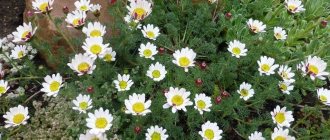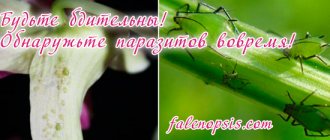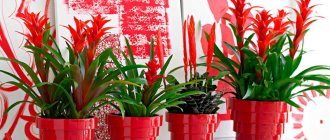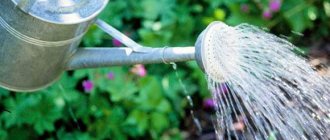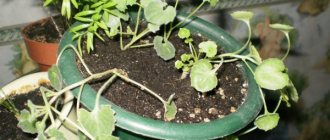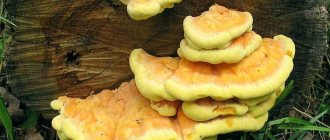Adenophora
Adenophora is a close relative of the bell, which is easy to guess from its popular name - bell. This herbaceous perennial is unpretentious, can grow in both sun and partial shade, is undemanding to the type of soil, and does not require shelter for the winter. Keep in mind that adenophora needs good soil drainage and does not grow well in acidic soils.
Bellflower blooms most of the summer. Easily propagated by seeds. In this case, winter sowing is preferable. If you did not have time to sow bells in late autumn and plan to sow in the spring, it is advisable to stratify them for a month (keep them in the refrigerator).
Pests, diseases and possible problems
- The bell can be affected by aphids or spider mites. Treat the plant with an insecticide or a solution of laundry soap.
- Leaves may turn yellow from cold or lack of food or light.
- At high temperatures and in a stuffy room, flowering stops, the stems stretch and lose their elasticity.
- When water stagnates, various rots may appear at the roots.
- If you overwater your bell regularly, its leaves will either turn yellow or have dark spots on them.
Aquilegia
Behind the beautiful name aquilegia lies a well-known watershed. He is an eagle, doves, boots - there are countless popular names. English-speaking gardeners even call it "granny's hat."
About a hundred species of aquilegia are known, but hybrids are usually grown in gardens. Almost all watersheds feel great in the middle zone and even winter in the taiga zone without shelter. In addition, they prefer partial shade. Why isn't it an ideal plant for the garden?
The height of the plant can vary depending on the species: for example, from 30-40 cm for Biedermeier aquilegia and up to 120 cm for McCann hybrids.
Aquilegia blooms between June and August, depending on the variety. Sowing is carried out in open ground in the fall or through seedlings in March-April or in open ground in May.
When sowing in spring, the seeds are pre-stratified in the refrigerator.
Columbine is a perennial plant, so seedlings will bloom only in the second year of life. The third year can be considered their full bloom in the literal and figurative sense, but after 4-5 years the bush must be divided and replanted.
Aquilegia can also be propagated by shoot cuttings.
Aquilegia is great for ridges, alpine slides, and mixborders.
Caring for indoor bells
Selecting lighting for indoor bells
Campanulas remain light-loving plants even indoors. For lush flowering they need long daylight hours. Delicate leaves and flowers should be protected from direct sunlight, because campanula loves diffused lighting. Campanula will not withstand even light partial shade; at the slightest lack of light, its shoots stretch out, and the compactness and beauty of the bushes are lost.
It is best to place campanula on eastern and western window sills, and in a southern location - only with good shading (or in the interior in a place equal in lighting to the eastern and western window sills).
Temperature conditions for campanula
Indoor bells love coolness and cannot stand heat, which affects the beauty of flowering. Campanulas bloom most beautifully when they grow in a temperature range from 20 to 22 degrees Celsius. Higher temperatures can be compensated by increasing air humidity. But it is much more difficult to provide suitable conditions during winter dormancy.
Campanula can be grown as a perennial only when the air temperature in winter does not exceed 15 degrees Celsius. The optimal modes are even cooler - 5-10 degrees. If the winter is warm, the plant will bloom sparingly next year and gradually die.
During flowering, it is better not to move the campanula from place to place, or even turn it. But on the other hand, it is not afraid of fresh air, and if you take it out to the balcony or terrace before flowering, it will bloom no worse than in the room. True, you won’t be able to make the bells bloom again next year, so weigh all the pros and cons: if you want to grow campanula as a perennial, it’s better to leave it in the room.
Bells are equally leafy. © obp
Watering for indoor bells
Bluebells are moisture-loving crops, including in indoor culture. During active development in spring and summer, they need frequent watering that maintains constant moisture. They are as afraid of waterlogging of the substrate as they are of its complete drying out. But during the dormant period, watering is carried out differently. They are gradually reduced from the time flowering is completed, making procedures very rare and keeping the plant in almost dry conditions (allowing the substrate to dry out in the middle part between procedures).
Air humidity for campanula
Fortunately, indoor bells are not picky about air humidity. They do well both in greenhouses and in ordinary city apartments. Spraying on the hottest days or near heating devices will benefit them, especially since the flowers and buds are not afraid of getting wet. By increasing air humidity in general and spraying in particular, hotter temperatures during the flowering period can be compensated.
Feeding mode
Campanula needs fertilizer only during the active development stage - from waking up in the spring until the end of flowering. It is fed every 2 weeks with mixtures for flowering indoor plants. With the cessation of growth, feeding is cut off, not gradually reducing, but stopping for a sharp contrast.
Bellflower (Campanula isophylla). © obp
Brugmansia
Brugmansia is an exotic heat-loving crop that grows as a shrub or low tree. It is not common in our area, but can be grown on the coast of Crimea and the Caucasus.
Of course, it is difficult to confuse the huge brugmansia inflorescences, exuding an intoxicating aroma, with the much more modest bell, but they do have something in common.
Under artificial conditions, Brugmansia is propagated not only by dividing rhizomes, but also by germinating cuttings.
All parts of this plant are poisonous!
Galanthus
Galanthus is a well-known snowdrop, the first herald of spring. Depending on the weather and climatic conditions, it blooms in February-March.
Galanthus is very easily propagated by seed, but the seedlings will bloom no earlier than after 5-6 years. It is unlikely that any amateur gardener will agree to wait that long. That is why the most popular method of propagating snowdrops is by daughter bulbs.
During the season, one or two children are formed on the bulb, due to which the flower grows year after year, occupying an ever larger area. It is advisable not to interfere with this process, since galanthus does not really like transplants. However, you can replant it if you follow the correct agricultural practices:
- When and how to replant galanthus?
You don't have to wait until autumn to replant snowdrops!
Hyacinthoides
Hyacinthoides, or wild hyacinth, is also known as Spanish scilla, scylla or endymion. Don't let the name scare you - this bulbous perennial feels quite good in the middle zone.
This is a tall, stately beauty 30-45 cm high, strewn with a scattering of purple bell-shaped inflorescences.
Its flowering occurs at the end of spring - beginning of summer. Accordingly, it is planted in the ground in the fall, in September. Planting is carried out to a depth of 10-15 cm, maintaining the same distance between the bulbs.
- How to plant bulbs, tubers and corms?
Step-by-step instructions for planting bulbous, tuberous and corm flowers.
Gentian
Gentian is not only a charming ornamental plant, but also a medicinal plant. Decoctions and infusions based on it have been used since ancient times to treat all kinds of diseases.
There is a legend that the Illyrian king Gentus even treated the plague with the help of yellow gentian. In honor of him, the genus of these plants was named in Latin - Gentiana. But the Russian name, gentian, is a “tribute” to the characteristic bitter taste of its leaves and rhizomes.
Various types of gentian grow throughout the globe. In the European part of our continent, the most common are gentian cruciform, gentian of Cluses, stemless gentian, and gentian pulmonary; in Siberia and the Far East - gentian rough.
Representatives of these species are similar in appearance to each other; their inflorescences have a characteristic bell-shaped shape with petals of a bright bluish-violet hue.
This flower is unpretentious and thrives in rock gardens and alpine hills.
The simplest way to propagate gentian is through winter sowing. If you sow it in the spring, you will have to arrange for the seeds to undergo a three-stage stratification with heat, then cold and then heat again.
Low-growing species that grow in clusters (stemless, Cluse) can be propagated by division.
Datura
Datura is a powerful, showy annual, a close relative of Brugmansia. Its inflorescences are very large, funnel-shaped, vaguely reminiscent of bells.
Datura is easily and simply propagated by seeds. The shoots appear quite strong and strong. Sowing is carried out in March, and the seedlings are transplanted to a permanent place in May, when consistently warm weather sets in.
Like Brugmansia, all parts of the Datura plant are poisonous. Despite this, it is widely used in folk medicine.
Kobeya
Kobea is a luxurious climbing annual with large, bell-like inflorescences, usually white, lilac or purple.
The length of the vine reaches 3 meters.
Considering that this is a heat-loving plant, the seedlings of which do not tolerate frost, kobeya is grown through seedlings. Sowing is carried out in early spring; grown seedlings are transplanted into the ground in May, when the threat of return frosts has passed.
The plant needs good lighting and loose, fertile soil.
- 5 beautiful vines for a shady garden
Photos and descriptions of climbing bushes that do not require good lighting.
When and how to prune housebells
Campanula requires two prunings:
- after flowering and growth have stopped, long, thin branches are shortened (before the plant is transferred to the cold);
- with the beginning of active growth, already in the spring, dried, damaged shoots are cut out from the bushes, and in varieties that tolerate rejuvenation, the shoots are severely cut to 2/3 of the length (before moving them back to indoor conditions). Specify spring pruning parameters when purchasing.
Substrate for campanula : loose, breathable, lightweight, without the risk of compaction (a mixture of equal parts of humus, leaf and peat soils or a special substrate for flowering indoor crops and summer plants).
Frequency of replanting : if the plant does not degenerate, it is replanted in the spring after pruning, be sure to maintain the same level of depth (annuals are saved until spring for cuttings)
Pots : tight, small, in which the roots will fill the entire earthen ball, only a couple of centimeters larger than the previous one
Campanula equifolia. © Payakoff
Codonopsis
Codonopsis is the “brother-in-law” of the bell, so their external similarity is not surprising.
This is a herbaceous perennial that does not require care, but for good growth and flowering it requires a lighted area with neutral soil and constant watering.
As a rule, most types of Condonopsis are frost-resistant. If winters are particularly harsh in your region, you can, of course, cover the plant.
The “bells” of Condonopsis are quite large, delicate whitish-lilac shades. A real decoration for mixborders!
It is best to sow codonopsis before winter, in October-November. When sowing in spring, two to four weeks of stratification will be required.
Codonopsis will bloom in the first year of life!
Lobelia
Looking from afar, it is impossible to confuse lobelia with a bellflower, but upon closer examination it is noticeable that the shape of their inflorescences is similar. This representative of the Bellflower family can be either a perennial or an annual crop, depending on the species.
It forms low curtains strewn with “beads” of inflorescences. As a rule, they are white or purple, lilac with a white eye.
Lobelia is used in flower beds, dry streams, borders, and balcony containers. There are hanging forms that are sown in flowerpots.
Lobelia is sown for seedlings in April, several seeds in cups, and it is planted in a permanent place in May. Flowering occurs from June until the first frost in October.
In order for lobelia to grow into lush clumps, the tops are pinched when the plant reaches 20-25 cm in height.
- 10 flowers that are sown for seedlings in April
Master class on April sowing of ornamental plant seedlings.
Campanula bride and groom
The bluebell is a representative of a whole community of predominantly garden herbaceous species. The genus includes about 400 species, most of which are plants of temperate regions of Europe. But in the wild, winter-hardy Campanula species are found in the forests of Siberia, in the Caucasus mountains and even in the steppes of Central Asia.
Translated from Late Latin, “campana” means “bell,” but such a formidable name does not suit the delicate and fragile flowers, so the diminutive “bell” is assigned to the plant. Its charm is that during flowering the bush is covered with a cloud of bells in white, blue, indigo, or purple shades.
The vast majority of varieties are grown as ornamental plants in open ground. Campanula domestica is a group of southern species that cannot tolerate freezing temperatures and are grown indoors. In the wild, their range extends from Croatia to Southern Italy. An abundance of fresh air, bright, diffused light and a relatively cool, stable temperature are, in a nutshell, the conditions required by these warm-blooded species.
Equal leaf bell - a representative of the endemics of the Mediterranean regions of Italy, belongs to ampelous plants with flowing thin branches up to 40 cm in length, which during flowering are clothed in large white and blue bells.
K. equifolia
K. equifolia
Another species, also a very rare endemic, is Pozharsky’s bell, which has a permanent “registration” on the Balkan Peninsula, discovered by a German collector and botanist, and named in his honor. This is a perennial herbaceous plant that forms a miniature bush up to 20 cm in height, with heart-shaped leaves and small erect flowers. Nowadays there are terry species on sale, but they are more whimsical.
K. Pozharsky
K. Pozharsky
K. Pozharsky
Carpathian bellflower and its numerous varieties with more rounded, simple and double flowers than the equal-leaved one are also widespread.
K. Karpatsky
The bride and groom received the popular nickname campanula due to the white and blue color of the flowers, which is invariably present in all varieties. Now on sale you can see hybrids Alba - a virgin white color and Mayi - an azure blue hue. Our grandmothers called it “the flower of family happiness.” Bells given for a wedding, according to signs, will bring prosperity to the newlyweds’ home.
K. varietal
Bellflowers began to be grown at home quite recently. Previously, it was exclusively a garden crop. In addition to exquisite shades, homemade bells give their owner a long flowering period, in which they remain from spring to autumn.
Digitalis
Foxglove is a perennial loved by many gardeners for its impressive size, beauty and shade tolerance.
In the first year of life, the seedlings will grow to 15 cm in height, and in the second year their growth will reach 1.4-1.5 m.
The stem of foxglove is powerful and strong. It is decorated with a peduncle with large “bells” collected in brushes of white, cream, pink, lilac shades speckled on the inside.
Foxglove can be sown directly into the ground from mid-May to early June. It blooms from early summer to early autumn.
Caring for the crop essentially comes down to regular watering during dry periods.
general description
Most often, bells are perennial plants; there are annual and biennial types. The genus is very diverse, the height of the flower varies from 10 cm to 2 m, and it can vary greatly depending on the living conditions of the plant - humidity, soil composition, light.
The stems of the bell can be erect, sometimes branched, or can be thin lodging shoots. Both stems and leaves can be smooth or hairy. The leaf blades of bells are lanceolate, round, heart-shaped or slightly elongated, with a solid or serrate edge. The lower, wider ones are collected in a basal rosette, and the upper leaves located on the stems are always smaller and elongated.
Bell flowers are most often collected in panicles or racemes, rarely solitary. The color is usually blue, light blue, lilac, violet; there are species with white or pink corollas. The shape of the flower corresponds to the name; it consists of five petals, fused at the base of the flower, pointed at the ends and curved outward. In the largest flowering species, the corolla reaches 7 cm in length and 5 in diameter. The bell usually blooms in spring and summer, but there are also autumn-blooming species.
A characteristic feature of the bell flower is that the intensity of its color changes depending on the humidity of the air. In dry air the color becomes more intense, in high air it becomes more delicate.
Ostrovsky
Ostrovsky majestic is a Red Book species of the Bellflower family. This is a perennial that naturally lives in the mountains and foothills.
Ostrovsky grows slowly but surely: an adult plant reaches 1.2-1.8 m in height. It blooms in early summer, in June-July.
Considering its natural habitat, it is not difficult to guess that this crop loves the sun and easily tolerates drought. Ostrovsky is rarely found in gardens, but this is not surprising. Before planting in the ground, it is recommended to keep it as seedlings for 2-3 years. It will bloom only 4-5 years after germination.
Flowers that look like bells
The bell family includes more than 300 species. These amazing plants can be of various sizes: from 5 cm to 2 m in height. The colors are also very diverse: white, blue, yellow, pink, blue, purple, lilac, orange.
Tall and short plants can grow in a variety of areas: from mountain slopes to the steppe strip. Perennial flowers with large cups are often found in gardens. There are also annual plants with small cups.
You can also find flowers from other families that bloom in the form of bells.
Adenophora
- The flower, called adenophora, belongs to the bell family. Has several subspecies.
- The tall perennial plant has large cups of flowers in classic colors: from white to purple or blue.
- Several large flowers are formed on the racemes, the leaves are oblong, and the stems are thick.
- It blooms at the end of June and blooms until the end of July.
- During the flowering period they emit a honey aroma.
- They reproduce by seeds and are not picky about soil.
- They prefer sunny places.
- It is popularly called the bell because of the large shape of the flower.
Aquilegia
- Belongs to the ranunculaceae family.
- There are several hundred plant species in nature.
- Hybrids most often grow in gardens.
- Aquilegia can come in a variety of colors and sizes depending on the variety.
- This perennial plant blooms only in the second year of life.
- Arrow stems with future flowers emerge from the center of the bush.
- Each stem produces several flowers resembling a bell.
- The flower shape is complex; some species have spurs where nectar collects.
- The aroma is very subtle, sometimes completely absent.
- Propagated by seeds and cuttings after a 5-year cycle.
Brugmansia
- It is a tree-like shrub.
- People call it angel trumpets.
- It can grow only in the southern regions: the Caucasus and Crimea.
- The plant has a tall trunk of several meters.
- The light green leaves are oblong in shape.
- The flowers are large: up to several tens of centimeters in diameter.
- Under favorable conditions they grow quickly: several centimeters per day.
- The colors are bright yellow, orange, peach, cream and white-green.
- Blooms all summer.
- The aroma of flowers intensifies in the evening and at night.
- Propagated by cuttings.
- It has poisonous roots and stem.
Galanthus
- Known to many as snowdrop.
- Belongs to the amaryllis family.
- This perennial low plant blooms at the end of February-March, when spring comes and the snow melts.
- Prefers sunny places and loose soils.
- It grows in height up to 10-15 cm, the flowers are white in color, and may have small spots or stripes on the flower cups.
- Propagated by seeds and bulbs.
- If galanthus is planted with seeds, it will begin to bloom only after 5 years, when the bulb is formed.
- In nature, there are several dozen species of galanthus, and there are several hybrids.
Hyacinthoides
- It has many names, the most famous being wild hyacinth.
- This tall perennial plant blooms in late spring and early summer, with a total flowering time of about a month.
- Prefers partial shade and sunny places.
- Small bell-shaped inflorescences form on a single thick stem.
- The colors of the flowers are very different: white, pink, blue, lilac, dark blue.
- The leaves grow from the root and have a thin oblong shape, smooth to the touch.
- It reproduces by bulbs; it is best to divide the plant in the fall. It is necessary to replant the flower after 3 years.
Gloxinia
- Or Velvet Bell is a houseplant.
- Externally, gloxinia resembles a large violet.
- Imported from Brazil. The low flower has bright bells with many hairs on the flowers and leaves.
- The colors can be very different: from solid pink flowers to spotted colors with white tips.
- Blooms in March. Until the end of October, new flowers appear.
- The winter period is a dormant time for the flower, which means that it can shed all the foliage right down to the tuber and not show signs of life until spring.
- Very easy to care for.
- Prefers partial shade and indirect sunlight.
Gentian
- Has several dozen species.
- It got its name because of the bitterness of the leaves and flowers.
- Depending on the variety, it grows into a small or very tall plant.
- One flower blooms on one stem.
- The color comes in different colors: white, yellow, blue or blue.
- Blooms from late spring to early autumn depending on the species.
- It reproduces by seeds; some species can reproduce by dividing the bush.
- Different species can be annual or perennial plants.
- Easy to care for, prefers sunny places.
- It is a medicinal plant that helps against many diseases.
Datura
- Belongs to the nightshade family.
- It has many popular names: moonflower, henbane.
- This is an annual plant with a low stem.
- A large bell blooms on the stem, most often white, but can also have a purple color.
- The leaves are dark green and covered with hairs.
- The plant is poisonous, but can be used as a medicine for diseases in small doses.
- Propagated by seeds.
- A distinctive feature is that the flowers bloom towards the end of the day when the sun is at sunset.
- Prefers open sunny places and is not demanding in care.
Kobeya
- It has several species; creeping kobeya is most often found in gardens.
- This subspecies has vines several meters long, with the help of tendrils it clings to any surface, oval-shaped leaves, dark green in color.
- Large bells appear on small stems.
- They come in different colors: white, lilac, purple.
- They emit a bright musky aroma.
- It blooms all summer, some flowers are replaced by others.
- Prefers warm climates, loose soils and frequent watering.
- Kobeya is an annual plant, propagated by seeds and seedlings.
- Afraid of frost.
Codonopsis
- It is a perennial plant.
- Depending on the species, it has a creeping or erect stem.
- The stem and light green leaves are covered with hairs.
- The flowers are bell-shaped and arranged singly.
- The plant blooms in June and pleases the eye until the end of summer.
- The aroma is not entirely pleasant, but has an interesting coloring.
- The flowers are monochromatic: white-green, blue, lilac, blue.
- May have a "spotty" coloration inside the bell.
- Prefers sunny places, loose soil and frequent watering.
- It tolerates winters well and does not require additional shelter.
- It reproduces by seeds and blooms in the first year of life.
Lobelia
- It belongs to the bellflower family, but the flowers bear little resemblance to a bell.
- Depending on the species, it can be an annual or perennial plant.
- Most often it is a low plant with branching stems.
- Flowers appear in June.
- On one bush there appear many flowers of a simple type, similar to a bell.
- The color can be purple, pink, blue, or with white spots.
- To make the bush full, pinch the plant.
- Prefers loose and moist soils.
- Grows well in pots and on the balcony until the first autumn frosts.
- Propagated by seeds.
Digitalis
- Foxglove is a perennial plant.
- The plant has a tall thick stem.
- Lance-shaped leaves are located in the lower part of the stem, and peduncles are located in the upper part.
- The flowers are arranged alternately up to the very top of the stem.
- Flower color can be white, purple, cream or pink.
- There are spots of pink shades in the inner part of the flower.
- Blooms from late June to early autumn.
- Propagated by seeds.
- They can be sown directly in open ground from the beginning of summer.
- In the first year the plant grows up to several centimeters, in the second – more than 1 meter.
- Blooms in the second year.
- It is not demanding in care, can grow in shade and partial shade, requires rare watering in the absence of rain.
Ostrovsky
- It is a rare species of bells and is listed in the Red Book.
- This perennial plant reaches a height of more than a meter.
- It blooms after a few years; for the first 3 years of its life it should be kept in a pot as a seedling.
- Large white flowers appear on a tall stem.
- Blooms all summer.
- Prefers sunny places, tolerates drought well, and is not demanding in care.
- It does not tolerate frost, so it must be moved with soil to a secluded place for the winter.
- It is propagated by seeds and seedlings are grown for several years, since Ostrovsky grows very slowly over several years.
Grouse
- Hazel grouse belongs to the lily family and has several varieties.
- The most spectacular species is the imperial hazel grouse.
- This perennial plant has a large and thick trunk.
- At its top there are a group of bell-shaped flowers.
- The color can be very different: white, cream, yellow, pink, orange, red.
- There are varieties with spotted coloring.
- Can bloom for up to 2 months.
- The first flowers appear in early summer; there are spring varieties.
- With regular watering, you can increase the flowering period.
- The hazel grouse needs a sunny, open place.
- Propagated by bulbs, they are planted in the fall.
- Hazel grouse bulbs tend to repel underground animals: moles and mole crickets.
Symphiandra
- It is a perennial species of bells. Has several dozen varieties.
- It is little known in the gardens of the middle zone; it prefers the warmer regions of the Caucasus and Asian countries.
- Likes to grow in rocky places.
- This is a tall, branched perennial with sparse, dark green, elongated foliage.
- Large bell-shaped flowers are located singly on small stems.
- They can have different shades: white, blue, blue.
- It is not demanding in care, prefers loose soils, moderate watering.
- Grows well on the walls of houses and gazebos.
- Propagated by seeds and seedlings.
Wide bell
- A perennial plant known in eastern countries and the Far East.
- Has no varieties. It grows no more than a meter in height, spreading.
- Large flowers are located on individual stems.
- They have different colors: white, indigo, blue, dark purple.
- The broadbell blooms in mid-summer and blooms until early autumn.
- Propagated by seeds and division of rhizomes.
- Seedlings are planted in April; they can be planted in a permanent place at the end of May after frost.
- Prefers open sunny places, does not tolerate waterlogging and stagnant water.
- Regular loosening of the soil is necessary.
Cyananthus
- A plant from the bell family that came from tropical forests.
- A small perennial plant blooms in mid-summer and delights the eye with its small flowers until the beginning of autumn.
- The petals of the flower are painted in a soft blue color.
- At the base of the stem there are small leaves with hairs.
- Can grow in shade and sun.
- Does not tolerate wet soils and stagnant water.
- For the winter, you should put it in a cool place, be careful with the root system, it is poorly developed.
- Can be propagated by seeds.
- Seedlings are planted in pots in the spring and planted in the ground after the end of frost.
Eustoma
- A perennial plant from the gentian family. It has many names: lisianthus, Irish rose.
- It looks like a rose.
- A large variety of varieties have a variety of flower shades: white, tea, pink, red, blue, cyan, purple, orange and yellow.
- It grows to a height of just over half a meter.
- To form a large number of flowers, it is necessary to correctly form the crown and do pruning.
- For the well-being of the flower, the eustoma must be replanted every year or the soil must be changed every 2-3 years.
- Propagated by cuttings and seeds.
- The first flowers can be obtained after a few months.
- Regular watering, comfortable temperature and sunny places are required.
Grouse
Grouse, both imperial and chess, can be considered not only a real decoration of the garden, but its protectors. These luxurious bulbs repel moles and mole crickets.
- Imperial hazel grouse: all about buying, planting, care and reproduction
Everything you wanted to know about the unique royal plant - imperial hazel grouse.
For hazel grouse, choose areas with sufficient lighting and good soil drainage.
Hazel grouse bloom in April-May. The bulbs are planted in the ground in September-October. The planting of the hazel grouse is specific. To learn how to do it correctly, watch our video:
Wide bell
Broadbell, or platycodon, is an unpretentious rhizomatous plant about 40 cm high. The flowers of delicate pastel shades are quite large, 6-8 cm, and do not fade for a long time.
The broadbell blooms from mid-summer to early autumn. The easiest way to propagate it is by rhizome. Planting takes place in April.
For seed propagation, sowing is done in April, and seedlings are planted in the ground in May.
This plant loves dry, loose soil and needs good lighting.
Rules for planting in open ground
Usually, at the time of transplanting seedlings into open ground, the soil itself is already prepared. (Read below what requirements it must meet.) Dig the area to a depth of about 20 cm so that it is as loose as possible (break up large clods). Holes for seedlings are dug at a distance of 15 cm from each other. Place a little nitrogenous fertilizer, peat or mullein solution at the bottom of each hole.
For the transplant itself, you need to choose a warm sunny day (without precipitation). Carefully dig up the seedlings along with a lump of earth on the roots, and transplant them into the prepared holes. Immediately after transplantation, young shoots should be watered well with warm water.
When to plant
For warm regions and regions with a temperate climate, all procedures can begin as early as late April - early May. For colder climates, all dates are shifted at least a month ahead.
Growing in such a climate begins no earlier than late May - early June. Seedlings begin to be grown in March - this is suitable for any region, since it is produced at home.
Winter cultivation is also practiced in the south, usually until the first half of October. Winter crops must be mulched.
Selecting a location
The main criteria that you need to pay attention to when choosing a place for sowing are the illumination of the site, soil composition, humidity and protection from the wind if you plan to grow tall species. Tall bushes are often planted along buildings or around gazebos.
It is highly not recommended to place bushes near bushes and trees - the flowers may simply not have enough nutrients. Sowing near water sources is also not recommended.
Temperature
Bells have a peculiar relationship with the weather. Prolonged heat and temperatures above 25 degrees make them feel unwell and begin to wither. But they have increased resistance to frost and can easily survive sudden cold spells and large temperature changes.
Lighting
Since the heat is a burden to the bells, they need moderate, diffused lighting; shady areas are best suited. This goes well with their most successful use in landscape design - among the many light-loving plants, they will do an excellent job of improving the not-so-well-lit areas of your garden.
Humidity
Swampy and marshy areas are completely contraindicated for bluebells. The same applies to lowlands. Excess moisture is highly likely to cause various fungal diseases. But, not everything is so bad - if you monitor the soil moisture, do not allow water to stagnate and water on time, problems with diseases most often do not arise.
Soil selection
All of the above requirements, one way or another, relate primarily to the soil. The soil should be crumbly and quickly allow moisture to pass through so that it does not stagnate. To increase its drainage properties, if the soil is dense and heavy, you can add coarse sand. But this will only help if you are not lazy and thoroughly loosen the top layer of the land.
It is highly not recommended to choose lowlands for seedlings - water usually accumulates in them. Planting process
Bells are an unpretentious plant, and the entire process of their cultivation is no different from growing many other flowers. For an experienced gardener this will not be difficult. And for a novice gardener it will be a useful experience, which will be useful for growing more capricious and demanding plants.

